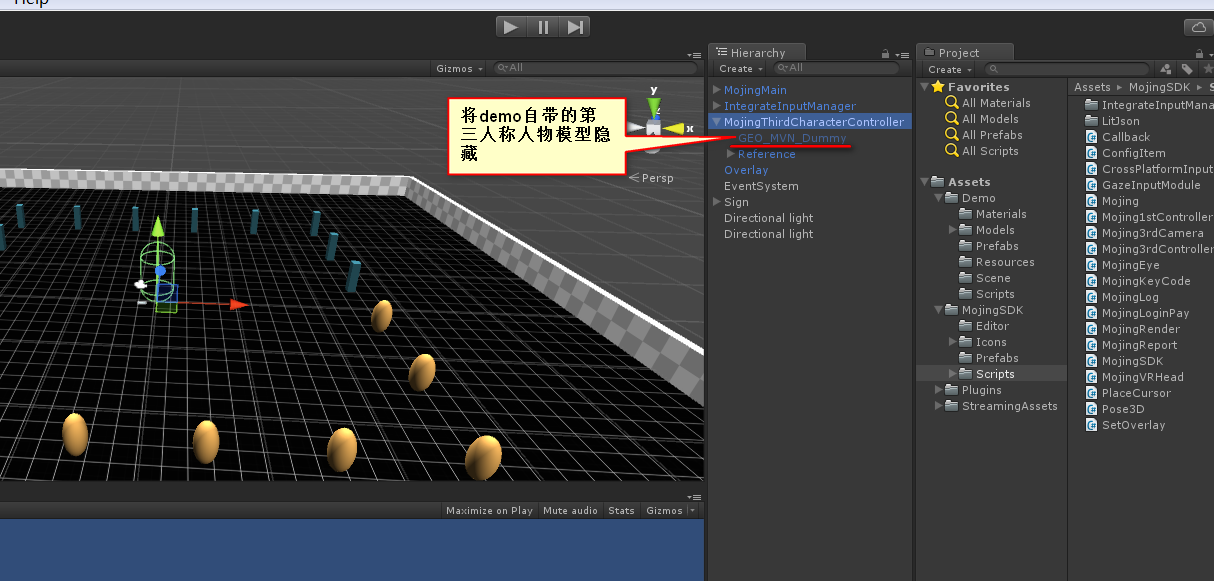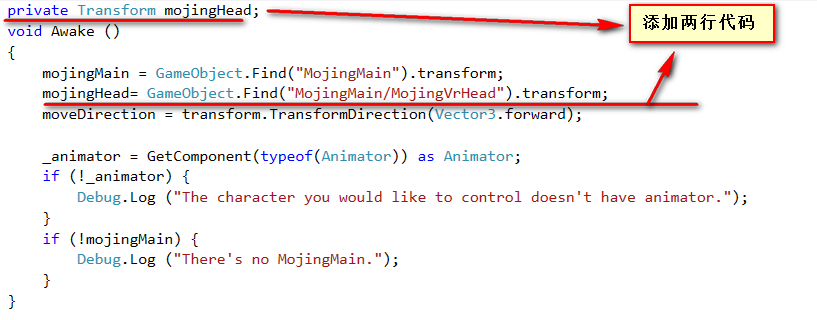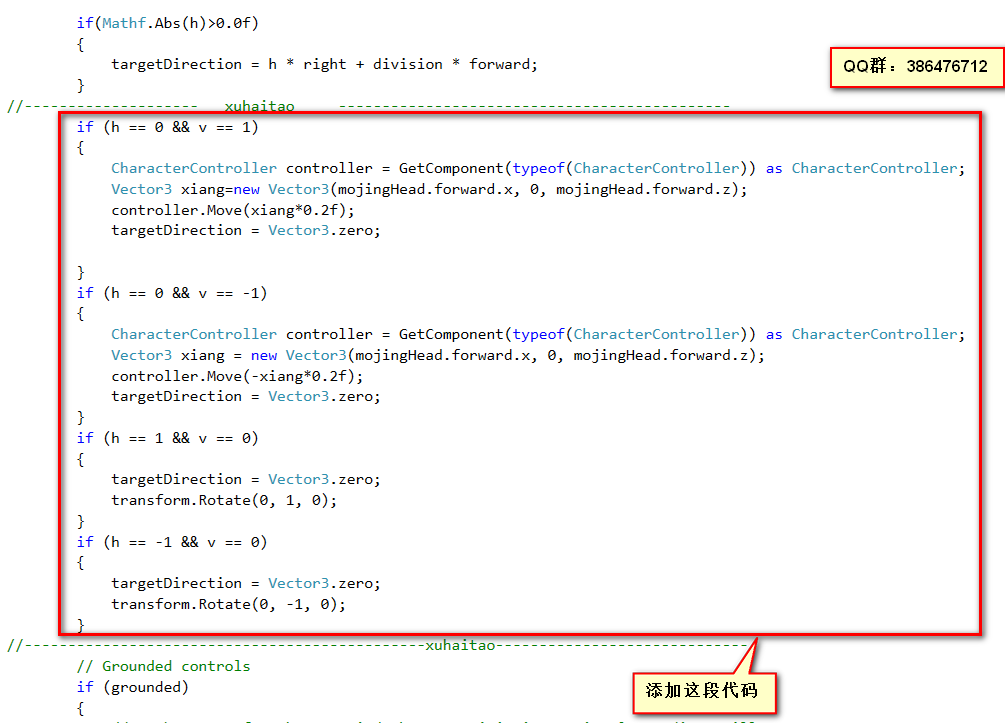暴风魔镜VR(第一人称和第三人称)
本文共 650 字,大约阅读时间需要 2 分钟。
今天讲讲魔镜漫游项目,先讲讲魔镜自带的两个漫游Demo,一个是第一人称的,另一个是第三人称的
使用也很简单,我们只要模仿就可以了 先说第一人称的 1. 删掉unity自带的相机 2. 换上魔镜的相机 3. 将魔镜为我们准备的魔镜第一人称角色控制器拖到场景中 经过上面的三步,轻松搞定,最终截图如下: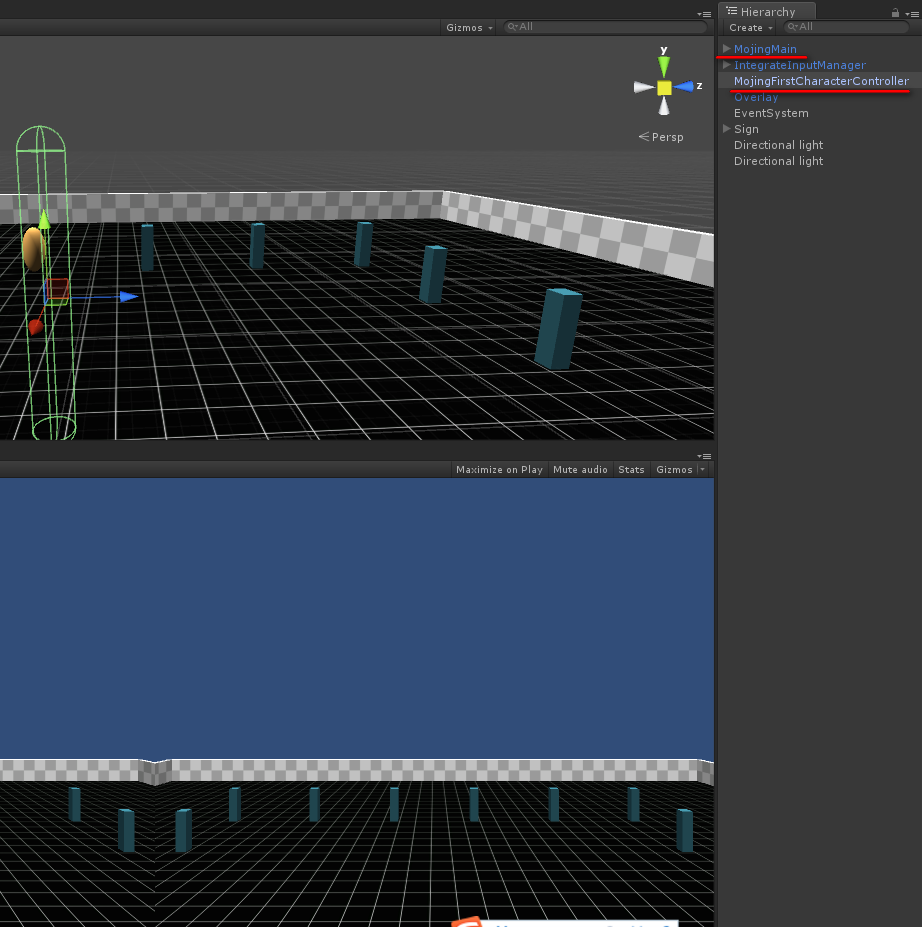
接着讲讲第三人称的
1. 删掉unity自带的相机 2. 换上魔镜的相机 3. 将魔镜为我们准备的魔镜第三人称角色控制器拖到场景中 4. 经过上面的三步,也是轻松搞定,最终截图如下: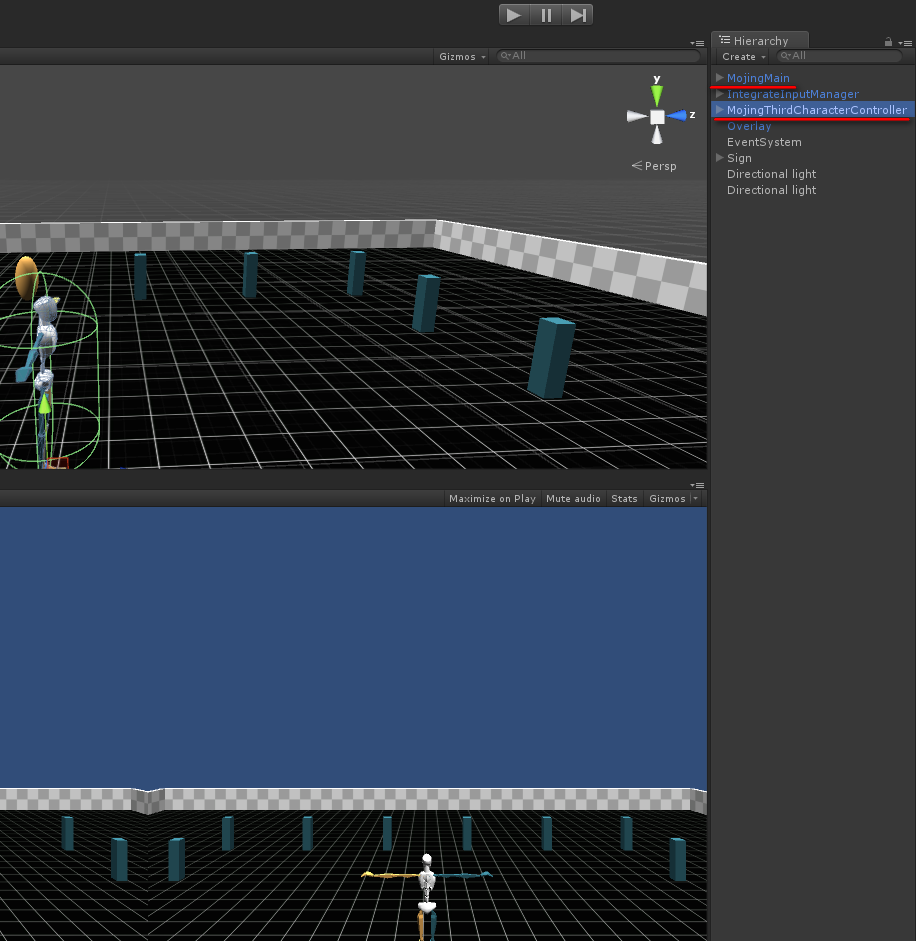
第一人称实现摇杆往前推向前移动,摇杆往后推向后移动,往左掰向左移动,往右掰向右移动
第三人称实现摇杆往左掰实现向左旋转视角,向右掰实现向右旋转视角,往前推实现向前移动,往后推实现一度狂转圈(往后推给人的感觉很不好),但是如果你想实现,往前推摇杆向前移动,往后拉摇杆实现向后移动,往左掰摇杆实现向左旋转视角,往右掰摇杆实现向右旋转视角,这个该怎么办呢,方法很简单,改造一下魔镜自带的第三人称控制器脚本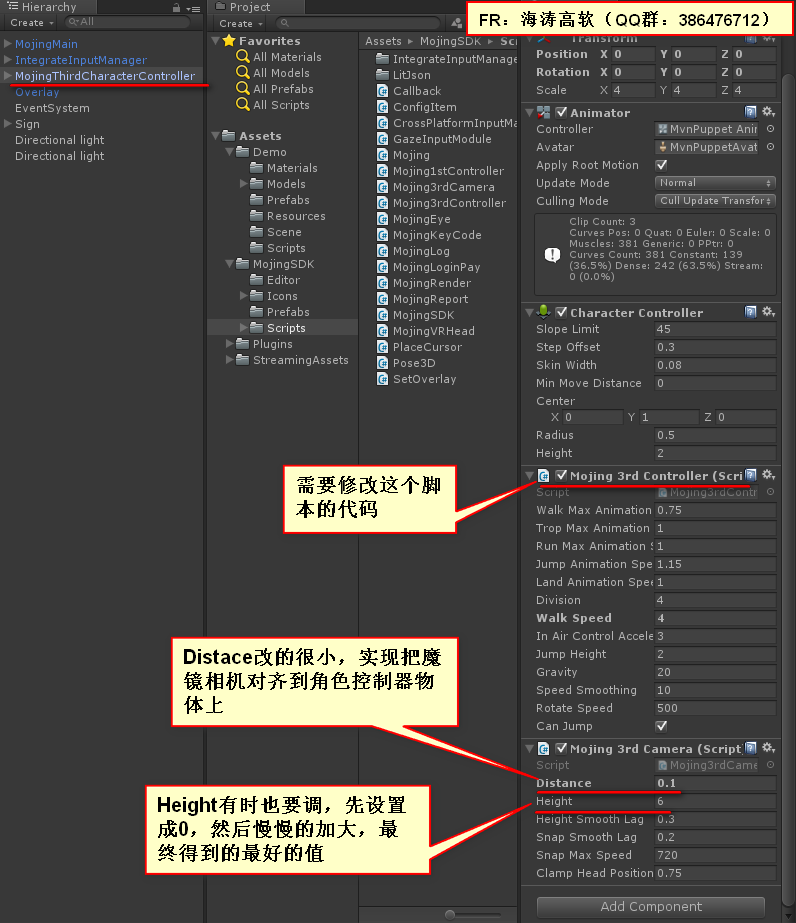
Mojing3rdController类中UpdateSmoothedMovementDirection的方法里面添加一段代码
最后我想说的是,第三人称相机的旋转都是靠向量来驱动,一定要对相机的运动原理了解透彻,只有这样才能在相机控制上运用自如,如果你还不清楚,建议研究研究超级玛丽源码,我最开始对相机有深入的了解,就是从这个项目学的,希望对大家有所帮助!
FR:徐海涛(Hunk Xu) QQ群:386476712
你可能感兴趣的文章
Nginx反向代理与正向代理配置
查看>>
Nginx反向代理及负载均衡实现过程部署
查看>>
Nginx反向代理是什么意思?如何配置Nginx反向代理?
查看>>
nginx反向代理解决跨域问题,使本地调试更方便
查看>>
Nginx反向代理配置
查看>>
Nginx启动SSL功能,并进行功能优化,你看这个就足够了
查看>>
nginx启动脚本
查看>>
Nginx在Windows上和Linux上(Docker启动)分别配置基本身份认证示例
查看>>
Nginx在Windows下载安装启动与配置前后端请求代理
查看>>
Nginx多域名,多证书,多服务配置,实用版
查看>>
nginx如何实现图片防盗链
查看>>
Nginx学习总结(13)——Nginx 重要知识点回顾
查看>>
Nginx学习总结(14)——Nginx配置参数详细说明与整理
查看>>
Nginx安装与常见命令
查看>>
Nginx安装及配置详解
查看>>
Nginx实战经验分享:从小白到专家的成长历程!
查看>>
Nginx实现反向代理负载均衡
查看>>
nginx实现负载均衡
查看>>
nginx开机启动脚本
查看>>
nginx异常:the “ssl“ parameter requires ngx_http_ssl_module in /usr/local/nginx/conf
查看>>
